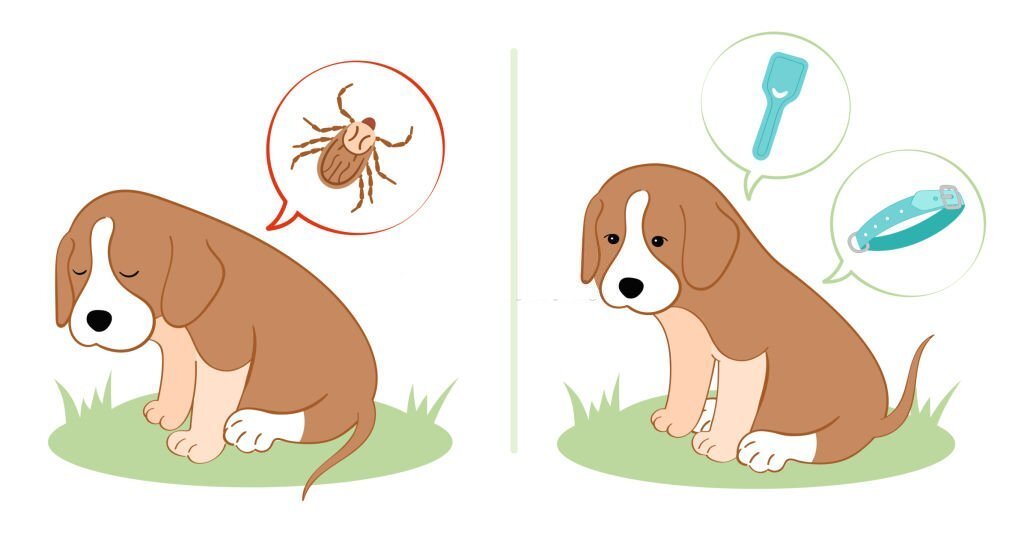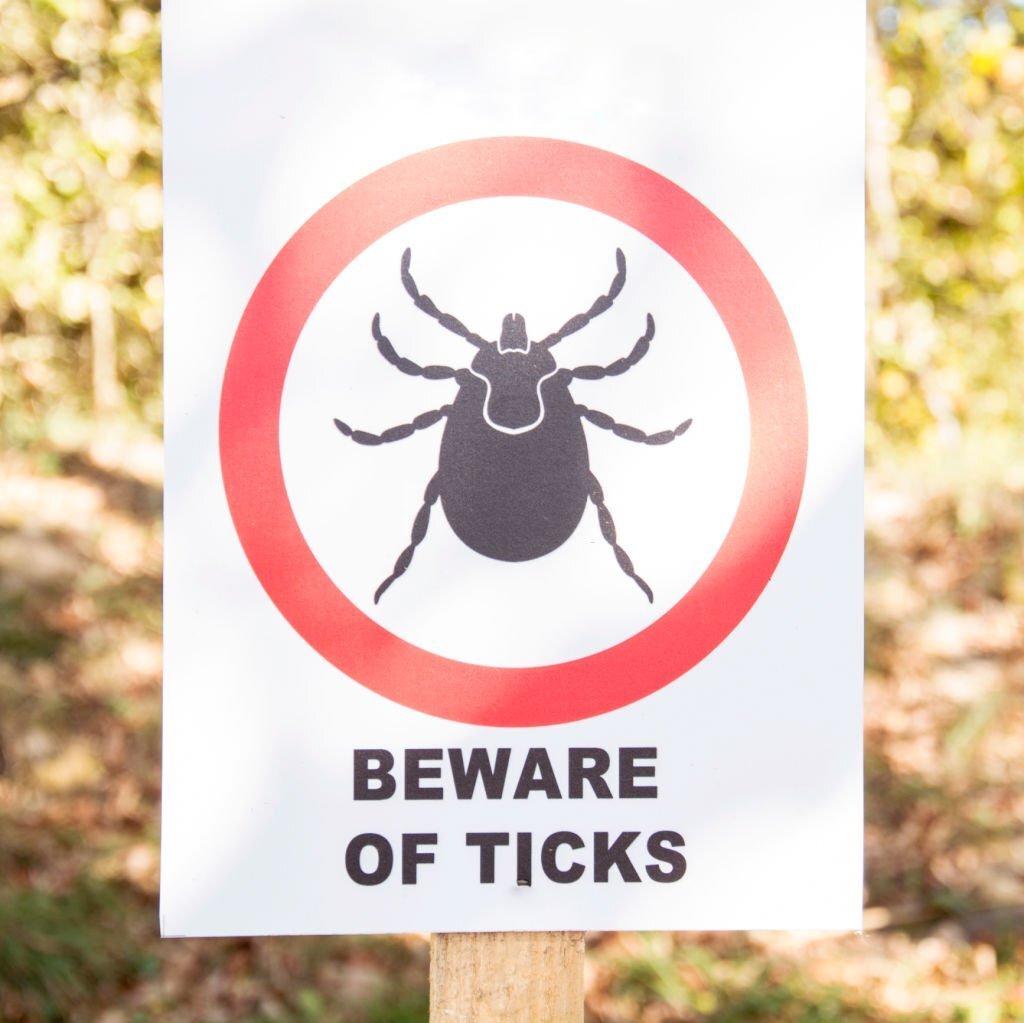Introduction:
Understanding the Threat of Tick-Borne Diseases and How to Protect Your Furry Friend
Ticks are more than just a nuisance to dogs. They can transmit a variety of diseases that pose a significant health risk to our beloved pets. In this comprehensive guide, we delve into the world of tick-borne diseases, equipping dog owners with the knowledge they need to keep their furry companions safe and healthy. From understanding the types of tick-borne diseases and their symptoms to implementing effective prevention strategies and seeking veterinary care, this guide serves as your go-to resource in the battle against tick-borne illnesses.
Understanding Tick-Borne Diseases:

Ticks are small arachnids that attach themselves to animals, including dogs, to feed on their blood. During this feeding process, they can transmit various disease-causing pathogens, leading to tick-borne illnesses. It’s essential to familiarize ourselves with common tick species, their geographical distribution, and the potential health risks associated with tick bites. By gaining a deeper understanding of tick-borne diseases, we can take proactive steps to protect our furry friends.
Common Tick-Borne Diseases in Dogs:
Tick-borne diseases can have severe consequences for our canine companions. This section explores some of the most common tick-borne illnesses that affect dogs, such as Lyme disease, Ehrlichiosis, Anaplasmosis, Babesiosis, and Rocky Mountain spotted fever. We discuss the symptoms, progression, and potential complications associated with each disease, allowing dog owners to recognize the signs early on and seek appropriate veterinary care.
Preventing Tick-Borne Diseases:

Prevention is key when it comes to tick-borne diseases. We discuss effective strategies to minimize the risk of tick bites and subsequent infections in dogs. Regular tick checks, proper grooming practices, and the use of tick preventives play a crucial role in preventing tick-borne illnesses. Additionally, we highlight the importance of creating a tick-safe environment and minimizing exposure to tick habitats, such as tall grasses and wooded areas.
Recognizing Symptoms and Seeking Veterinary Care:
Early detection is vital for successful treatment of tick-borne diseases. We outline the common symptoms associated with tick-borne illnesses, such as lameness, fever, lethargy, and loss of appetite. Encouraging regular veterinary check-ups, we stress the importance of blood tests for early detection and the role veterinarians play in diagnosing and treating tick-borne diseases. Prompt veterinary care is essential to improve the chances of a positive outcome.
Creating a Tick Prevention Plan:

Developing a personalized tick prevention plan is crucial for every dog owner. We discuss various tick preventive options, including topical treatments, collars, and oral medications. By integrating tick prevention into a dog’s routine and following a year-round approach, we can ensure consistent protection against tick-borne diseases. We provide guidance on selecting the right preventive measures based on individual dog’s needs and geographical location.
Additional Considerations:
Tick-borne diseases not only affect our pets but can also pose risks for humans. We address the importance of protecting ourselves and our families from tick bites and tick-borne illnesses. Spreading awareness within the dog-owning community is essential to combatting these diseases effectively. We provide additional resources and references for further information on tick-borne diseases and preventive measures.
Conclusion:
Armed with the knowledge gained from this comprehensive guide, dog owners are better equipped to safeguard their pets from the threats of tick-borne diseases. By understanding the types of diseases, recognizing symptoms, implementing prevention strategies, seeking veterinary care, and taking additional precautions, we can keep our furry friends safe, healthy, and free from tick-borne illnesses. Let’s join forces in the fight against tick-borne diseases and provide our dogs with the protection they deserve.
FAQ
Q1: What are tick-borne diseases?
Tick-borne diseases are illnesses caused by pathogens transmitted to dogs through tick bites. These diseases can have various symptoms and can range from mild to severe health conditions.
Q2: Which tick-borne diseases are common in dogs?
Common tick-borne diseases in dogs include Lyme disease, Ehrlichiosis, Anaplasmosis, Babesiosis, and Rocky Mountain spotted fever. These diseases can cause a range of symptoms and complications if left untreated.
Q3: How can I prevent tick-borne diseases in my dog?
Prevention strategies include regular tick checks, grooming practices, and the use of tick preventives. Creating a tick-safe environment and minimizing exposure to tick habitats are also crucial steps in preventing tick-borne diseases.
Q4: What are the symptoms of tick-borne diseases in dogs?
Symptoms can vary depending on the specific disease but may include lameness, fever, lethargy, loss of appetite, joint pain, swollen lymph nodes, and more. It’s important to be aware of these symptoms and seek veterinary care if any concerns arise.
Q5: When should I seek veterinary care for tick-borne diseases in my dog?
It is recommended to seek veterinary care if you notice any symptoms or suspect that your dog may have been exposed to ticks. Early detection and treatment are crucial for the successful management of tick-borne diseases.
Q6: What are the available tick prevention options for dogs?
Tick prevention options include topical treatments, collars, and oral medications. Your veterinarian can help you choose the most appropriate preventive measures based on your dog’s needs and geographical location.
Q7: Can tick-borne diseases affect humans?
Yes, some tick-borne diseases can affect humans as well. It’s important to take precautions to protect yourself and your family from tick bites and to be aware of the signs and symptoms of tick-borne illnesses in humans.
Q8: How can I raise awareness about tick-borne diseases in the dog-owning community?
You can raise awareness by sharing information with fellow dog owners, participating in community events or online forums, and distributing educational materials. Spreading awareness helps promote prevention and early detection of tick-borne diseases in dogs.
Q9: Are there any additional resources for more information on tick-borne diseases?
Yes, there are several resources available, including veterinary websites, pet health organizations, and publications dedicated to tick-borne diseases in dogs. These resources can provide further details, tips, and guidelines for prevention and management.
These FAQ answers provide key information related to tick-borne diseases in dogs, addressing common questions that dog owners may have about prevention, symptoms, veterinary care, prevention options, and the impact on humans. They aim to offer concise explanations and insights to help readers gain a better understanding of tick-borne diseases and how to protect their furry companions.
